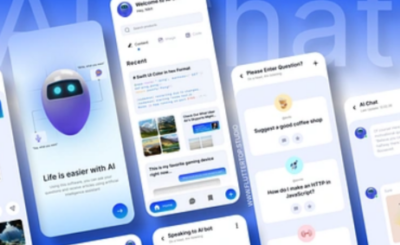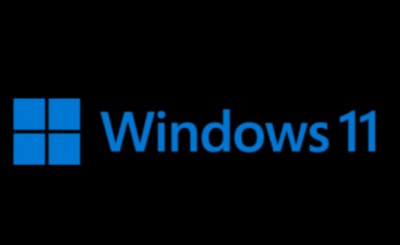
Traditional monolithic architectures, where all application components are tightly coupled, often struggle to meet the demands of modern web development. This is where microservices come into play. Microservices, a popular architectural style, break down an application into smaller, independent services, enabling flexibility, scalability, and efficient development. For aspiring developers, understanding microservices is essential, and enrolling in a full stack developer course in Hyderabad can provide the foundational knowledge and hands-on experience needed to implement this architecture effectively.
What Are Microservices?
It is a design approach where an application is divided into a collection of small, loosely coupled services. Each service focuses on a specific functionality, such as user authentication, payment processing, or product management. These services communicate with each other through APIs, often using lightweight protocols like HTTP or messaging queues.
Unlike monolithic applications, where all components are interconnected and must be updated together, microservices allow developers to update, scale, or deploy individual services independently. This flexibility is a key reason why many large-scale full stack applications, such as Netflix, Amazon, and Uber, rely on microservices.
For developers eager to explore this architecture, a full stack developer course offers a comprehensive understanding of how microservices fit into modern application development.
Advantages of Microservices in Full Stack Applications
Microservices offer several advantages that make them a preferred choice for large-scale applications. Let’s explore these benefits.
1. Scalability
One of the biggest advantages of microservices is their ability to scale independently. In a traditional monolithic application, scaling involves duplicating the complete application, even if only one component requires additional resources. With microservices, developers can scale individual services based on demand.
For instance, an e-commerce platform can scale its payment processing service during a holiday sale without scaling the entire application. This targeted scalability saves resources and ensures better performance.
Scalability is a critical topic in any full stack developer course in Hyderabad, where students learn to build applications that handle large-scale traffic efficiently.
2. Flexibility in Development and Deployment
Microservices let teams to work on different services independently, often using different programming languages or frameworks for each service. This flexibility allows teams to choose the best tools for each specific functionality.
For example, a full stack application might use Node.js for its user authentication service, Python for data analytics, and Java for payment processing. Microservices also support independent deployment, meaning updates to one service don’t require redeploying the entire application.
This independence is particularly beneficial for continuous integration and delivery (CI/CD) pipelines, a concept widely taught in a full stack developer course.
3. Fault Isolation
In this a failure in one component can bring down the entire system. Microservices, however, are designed to be fault-tolerant. If one service fails, it doesn’t impact the others, allowing the application to continue functioning with minimal disruption.
For example, if the recommendation service in a video streaming platform goes down, users can still browse and stream videos because the core services remain unaffected.
Learning how to design fault-tolerant systems is a valuable skill for developers, and a full stack developer course in Hyderabad covers the principles and practices required to implement robust microservices.
4. Technology Agnosticism
Microservices let developers to select the best technology stack for each service. This “polyglot programming” approach enables teams to leverage the strengths of different tools and languages.
For instance, a machine learning service might use Python for its rich library ecosystem, while a real-time chat service might use Go for its performance and scalability. This flexibility is not feasible in monolithic architectures, where a single technology stack is used throughout.
Students in a full stack developer course gain exposure to multiple technologies and learn how to integrate them effectively in microservices-based projects.
Challenges of Microservices
While microservices offer many benefits, they also introduce complexities that developers must address.
1. Increased Complexity
Managing alot of services, each with its own database, codebase, and deployment pipeline, can be challenging. Developers must also implement inter-service communication and ensure that APIs are reliable and secure.
2. Monitoring and Debugging
With microservices, identifying the root cause of an issue can be more difficult than in monolithic applications. Tools for centralized logging, monitoring, and tracing, such as ELK Stack or Prometheus, become essential.
3. Network Latency
Since microservices communicate over the network, latency and potential communication failures are common concerns. Developers must implement retry mechanisms, load balancing, and caching to mitigate these issues.
Implementing Microservices in Full Stack Applications
Microservices are particularly well-suited for full stack applications, where both the frontend and backend benefit from modularity and scalability. Here’s how microservices fit into a full stack application:
1. Backend as a Collection of Services
The backend is divided into individual services, each responsible for a specific functionality. These services are usually exposed through RESTful APIs or GraphQL.
For example, in a full stack e-commerce application:
- The Product service handles product listings and details.
- The Order service manages order placement and tracking.
- The User service manages user authentication and profiles.
2. Frontend Integration
The frontend communicates with the backend services using APIs. With tools like React, Angular, or Vue.js, developers can build modular components that align with the microservices architecture.
For instance, a React application might have separate components for products, orders, and user profiles, each fetching data from the respective backend service.
A full stack developer course in Hyderabad teaches students how to design and build both the frontend and backend of microservices-based applications.
Best Practices for Microservices Architecture
To ensure the success of a microservices-based application, developers should follow these best practices:
1. Design Services Around Business Capabilities
Each microservice should represent a distinct business capability, such as user management or payment processing. This approach ensures that services are cohesive and focused.
2. Implement API Gateways
This acts as a single entry point for the application, managing requests to different services. It simplifies communication and provides features like authentication, rate limiting, and caching.
3. Automate Testing and Deployment
Automated testing and CI/CD pipelines are essential for managing microservices, as they ensure consistent and reliable deployments.
4. Focus on Security
Since microservices rely on inter-service communication, securing these interactions is critical. Developers should use encryption, authentication, and access controls to protect sensitive data.
Conclusion
Microservices are transforming the way full stack applications are designed and developed. While microservices introduce complexities, the benefits far outweigh the challenges when implemented correctly. For those looking to master microservices and other modern development practices, a java full stack developer course provides the perfect foundation.
A developer course combines theoretical knowledge with practical projects, offering learners a chance to build microservices-based applications in a dynamic and thriving tech ecosystem. By gaining expertise in this architecture, developers can position themselves at the forefront of the industry, ready to take the challenges of modern application development.
Contact Us:
Name: ExcelR – Full Stack Developer Course in Hyderabad
Address: Unispace Building, 4th-floor Plot No.47 48,49, 2, Street Number 1, Patrika Nagar, Madhapur, Hyderabad, Telangana 500081
Phone: 087924 83183











